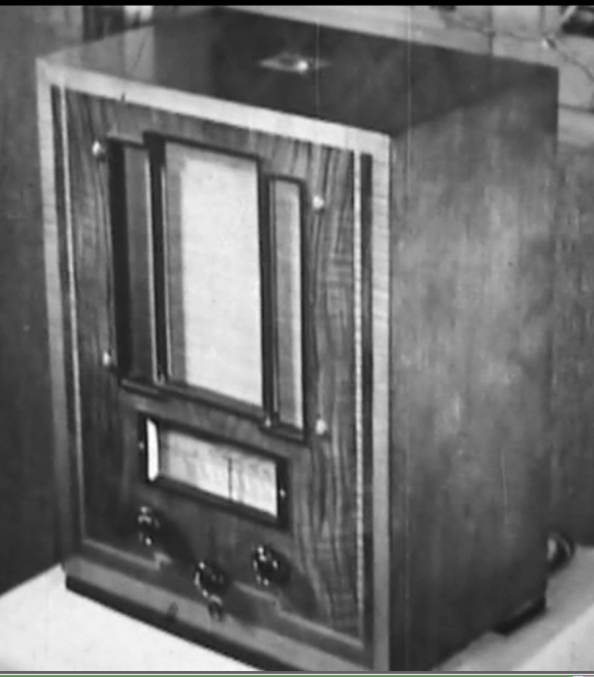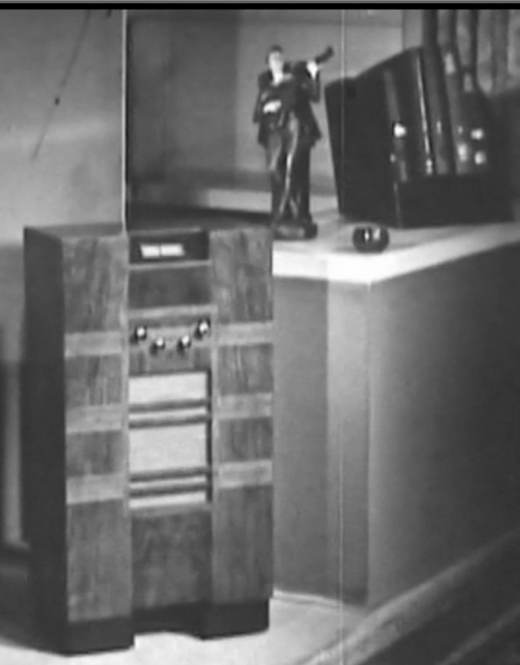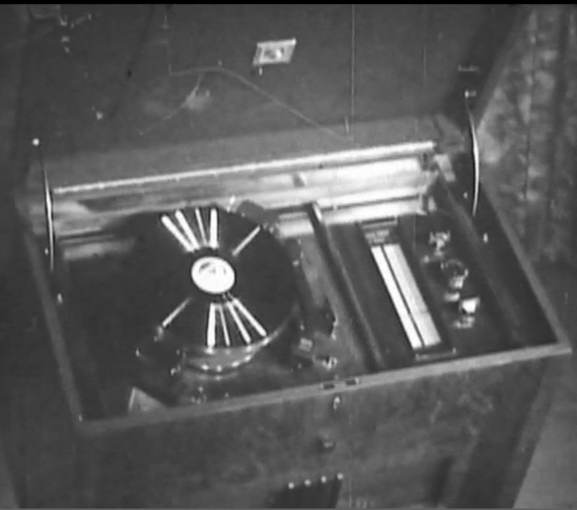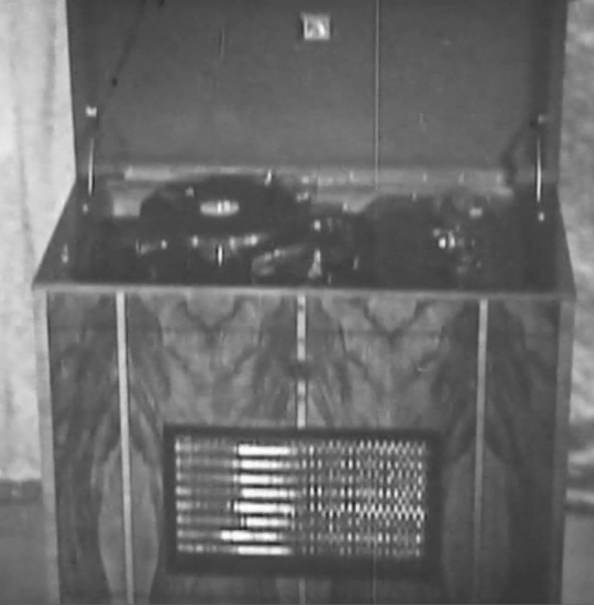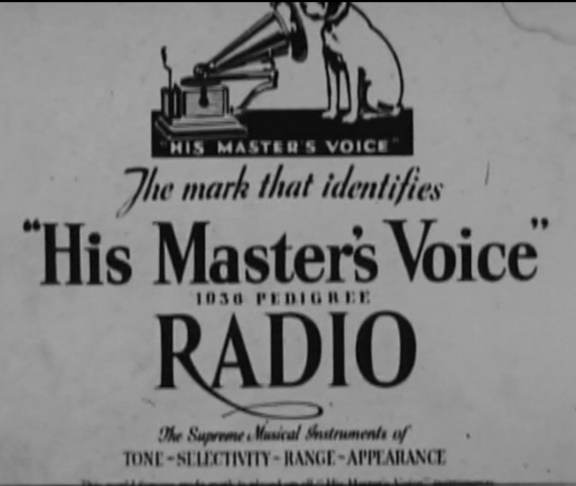
History of the manufacturer
HMV (Brand), His Masters Voice, The Gramophone Company Ltd.; Middlesex
Both will display your name after an officer has activated your content, and will be displayed under «Further details ...» plus the text also in the forum.
| Name: | HMV (Brand), His Masters Voice, The Gramophone Company Ltd.; Middlesex (GB) |
| Brand: | HMS || The Gramophone |
| Abbreviation: | hmv |
| Products: | Model types Brand |
| Summary: |
His Masters Voice, The Gramophone Company Ltd. Brand: HMV HMV's story starts in 1898 with the Gramophone Company, a London hub for distributing records. Their iconic trademark, "His Master's Voice," emerged in the same year, featuring Nipper, a dog listening to a gramophone. In 1921, the 1st HMV store opened, offering records & gramophones directly to music fans. HMV thrived throughout the 20th century, expanding across the UK and internationally. Their stores offered not just music but also instruments & electronics. The rise of digital music in the 2010s challenged their model, leading to financial difficulties. HMV has undergone ownership changes and store closures, with a focus on online sales in some regions. Despite challenges, HMV continues to adapt, offering curated physical media alongside online options and even live music events. Nipper remains a symbol of HMV's dedication to bringing the joy of music to generations. |
| Founded: | 1921 |
| Production: | 1921 - |
| History: |
HMV: A Journey Through Sound, Forever Loyal to "His Master's Voice" HMV, a name synonymous with music for generations, boasts a rich history that reflects the evolution of the music industry itself. Here's a detailed look at its journey, intertwined with the story of the iconic Nipper painting. From Humble Beginnings to Retail Powerhouse (1898-1921): The Birth of "His Master's Voice" (1898): HMV Takes Center Stage (1921): Expansion and Domination (Later 20th Century): The Digital Age and Changing Landscape (Early 21st Century): Facing Challenges and New Beginnings (2010s-Present): HMV's presence has shrunk in some countries. While the iconic Oxford Street store remains, others have closed, with the focus shifting to online sales in some regions. However, HMV continues to adapt, offering a curated selection of physical media alongside online options and even venturing into live music events. A Legacy of Music and a Loyal Companion: [1] British Radio Valves The Classic Years 1926 - 1946, Supplement, p. 44] |
| Country | Year | Name | 1st Tube | Notes |
|---|---|---|---|---|
| GB | 21 | Pick-up Soundbox No. 2 | Gramophone soundbox with steel needle and mica diaphragm The sound box was introduced i... | |
| GB | 36 | 482 | W42 | His Master's Voice 482 Seven Valve All-Wave Superhet, 16.5 - 2000 metres. Speciall... |
| GB | 37 | 464 | W21 | 6-Valve, battery-powered superhet with an RF stage. Chassis appears to be identical to ... |
| GB | 33 | 436 [AC] | MS4B | Similar to the Marconiphone 253AC table radio. |
| GB | 39 | 1601 | X65 | |
| GB | 48–50 | 5302 | X81 | 3 x KW |
| GB | 39 | 1105 | X65 | There is also a Belgian HMV 1105, but this model uses the same chassis as the Marconiph... |
| GB | 40 | Battery 1403 | X14 | Portable battery valve receiver with a carrying handle on top. US valves 1A7G, 1N5G, 1H5G ... |
| GB | 31 | 3 Valve Radio Receiver 435 | MS4B | |
| GB | 31 | 501 (not Radiogram) | MS4B | It seems that the Marconi - His Master's Voice model 501 was available with and without re... |
| GB | 31 | 531 | MS4 | Mains supply voltage doe MVH 531: 95-102 / 103-110 / 111-118 / 119-127 / 128-136 / 137-145... |
| GB | 32 | 532 | VMS4 | Also available in cheaper cabinet at £84. |
Further details for this manufacturer by the members (rmfiorg):

THE GRAMOPHONE COMPANY, Ltd., is a British Company incorporated in 1900. Its factories at Hayes, Middlesex, are the largest talking-machine factories in Europe. They are the only British factories equipped for the complete production of Gramophones and Records. The Gramophone Company does not have its cabinets, spring motors or other essential parts made outside -- it makes its own.

|
Hits: 4267 Replies: 2
HMV (EMI) Factory Tour 1936
|
|
|
Michael Watterson
26.May.14 |
1
DVD transfer of a 16mm silent promotional film donated to Radiomuseum by Sue Davis, UK. (Thanks!). We have the film so may in the future make a better transfer. I edited a little and uploaded to YouTube HMV factory tour 1936
Feel free to suggest here what the models illustrated are and comment on YouTube ideas for a Sound Track.
|
|
Michael Watterson
26.May.14 |
2
"Screen grabs" From the video
1:
2:
3:
5:
6:
7:
8:
9:
I think maybe 1, 5 & 7 are similar or the same? One is in the last sequence
Evidence of 1936 date
Finally the actual Nipper painting
|
|
Michael Watterson
27.May.14 |
3
Paul in UK says:
1935 HMV 340 1935 HMV 570 1935 HMV 441 1935 HMV 444 1935 HMV 541 1935 HMV 800 Autoradiogram |
|
Hits: 11489 Replies: 8
His Masters voice : unknown
|
|
|
Bruno Brasseur
29.Aug.05 |
1
Who knows this radio ? Attachments
|
|
Omer Suleimanagich
30.Aug.05 |
2
This radio is a German, post WW II RCA brand radio. If I'm not mistaken, most of these radios were made by Philips, West Germany in the 1950's for RCA. I understand that other German manufacturers made these type of table radios for RCA too. The reason I think that most of these radios were made by Philips, is that they used vacuum tubes instead of selenium rectifiers for the B+ in the fities. Most likely Philips did this, so they could sell more vacuum tubes. With Philips products, everything was business first, and anything else second. Omer |
|
Walter Haring
30.Aug.05 |
3
Hello Omer Interesting! Can you show one of these RCA-Philips or proof otherwise that Philips produced RCA branded radios? Why i'm asking? Simply because i own several post WWII RCA's and all resemble the US models in the kind how they are built - also the schematics show the typical layout for RCA although these radios were built for the European market and therefore are not documented in US schematic collections as Rider's or Beitman's. Also the use of octal tubes in these RCA radios instead of tubes typically made/used by Philips at that time frame let me think, that these radios were made by RCA itself and not by Philips. Then too, i don't know of any connection between HMV and RCA, but our British collegues will shurely know more. Kind regards, Walter |
|
Omer Suleimanagich
30.Aug.05 |
4
RCA didn't make vacuum tube radios with sliderule scales that included FM (UKW), shortwave, and longwave. I'm not sure of the model, but last year there was an EBay listing in Texas of an RCA radio I wanted to purchase. The same exact model was on a Philips web site as a mid fifties Philips model. You might want to confirm this by going to, http://radiotechniek.cjb.net/, with your firewall and antivirus off, to download PDF files of schematics and service manuals. Is the power tube a 6L6 or 6V6? regards, Omer |
|
Omer Suleimanagich
31.Aug.05 |
5
What is the tube layout and what is the year of manufacture? Omer |
|
Omer Suleimanagich
31.Aug.05 |
6
Hi Walter, Actually you have a very good point! HMV (AKA "His Master's Voice) was a British company. Here below is a Belgian made HMV, http://www.radiomuseum.org/r/hismasters_1113.html. I'm still curious to know if there was a connection between RCA, HMV, and Marconiphone. RCA did sell radios like this in Europe and also the US. I hope someone out there could enlighten us about all of this. Best regards, Omer |
|
Walter Haring
31.Aug.05 |
7
Hi Omer You're asking for tube line up's etc. of my RCA's. Please see e.g. http://www.radiomuseum.org/r/rca_5q31x.html or http://www.radiomuseum.org/r/rca_q110.html These are radios without FM. The only RCA with FM that i own isn't in presentable condition. I kept it as future project, because, as far as i know, it's the world's first consumer FM radio with frequency range of 88 - 108 MHz (it dates back to 1947). But this one has FM and BC - no longwave or SW and was also sold in the USA (no special Euro-Version). For the moment, i can't remember having seen a RCA with all four wave bands, but i'm not a RCA-expert. But - back to my question resulting of your statement in posting # 2 of this thread : can you show a RCA (or HMV) branded radio with Philips (Germany) "innards" that dates back to the 40ies or early 50ies as the HMV probably dates, that Mr Brasseur shows? Kind regards, Walter Haring |
|
Omer Suleimanagich
31.Aug.05 |
8
Please check RCA model numbers 4QR64X and 67QR77M. I'll see if I can dig up some more info. regards, Omer |
|
John Turrill
30.Sep.05 |
9
Hello Omer, |
End of forum contributions about this manufacturer/brand
| Data Compliance | More Information |












